Ninh Thuan, a land of sunshine and wind, is not only famous for its long beaches and vast sand dunes but also a convergence of unique Cham Pa cultural values. In the heart of this land, My Nghiep weaving village emerges like a precious gem, where looms still rhythmically clatter day and night, weaving brocade fabrics imbued with the identity and soul of the Cham people. Visiting My Nghiep, tourists can not only admire the exquisite beauty of handicraft products but also immerse themselves in the unique traditional cultural space, listening to the story of a craft that has existed and developed through generations.
My Nghiep: An Ancient Cham Village Renowned for Traditional Weaving
My Nghiep village, also known as Plei Caklaing in ancient Cham language, is located in Phuoc Dan town, Ninh Phuoc district, Ninh Thuan province. Situated just over 1km east of National Highway 1A, this village is nestled amidst lush green gardens, offering a peaceful and tranquil space, separated from the hustle and bustle of the city. Together with Bau Truc pottery village, My Nghiep has long been considered a brilliant cultural symbol of the Cham people in ancient Panduranga.
The craft of brocade weaving in My Nghiep has a history of hundreds of years, closely associated with the formation and development of the Cham community here. According to historical documents and folk legends, Cham weaving appeared very early and reached a sophisticated level. Po Ina Nagar, the goddess revered by the Cham people as the craft’s ancestor, is believed to have taught weaving to the villagers. This belief is still preserved and expressed through traditional rituals and festivals of the Cham people in My Nghiep.
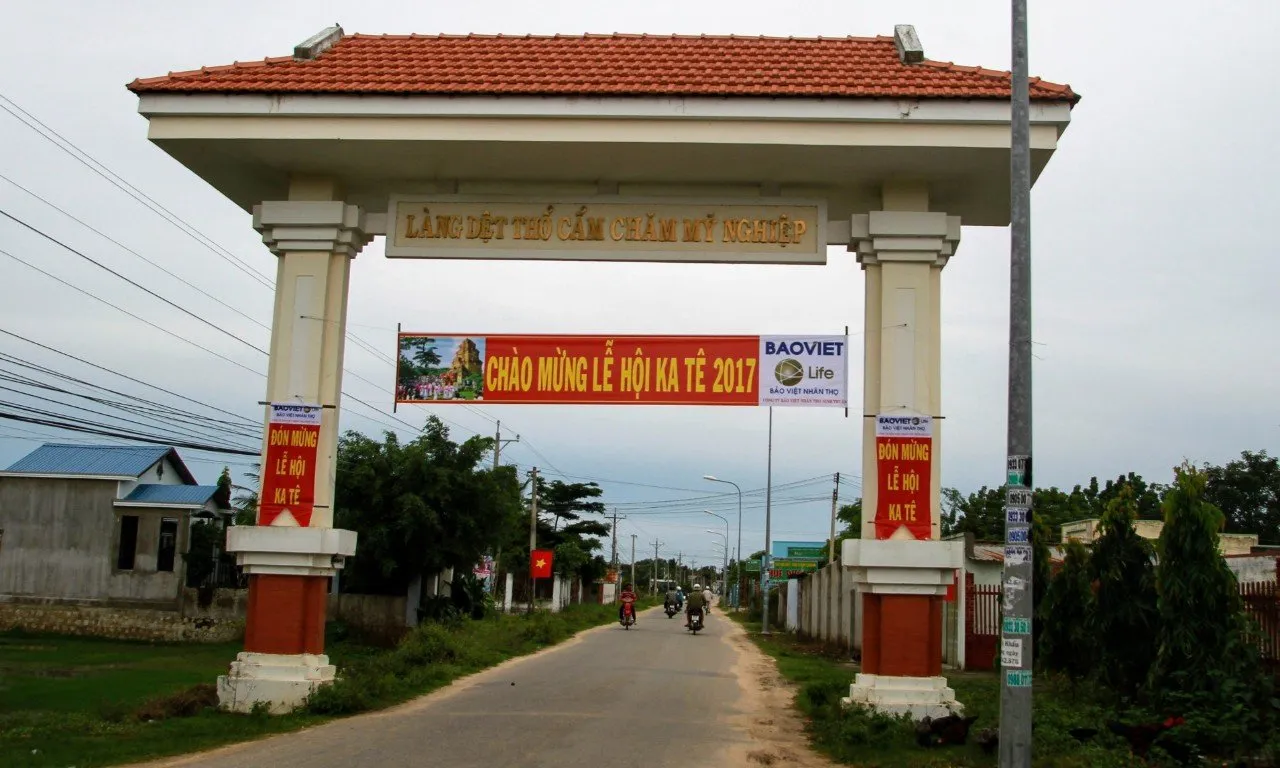
Entrance to My Nghiep Cham weaving village in Ninh Thuan, a place preserving unique traditional culture.
Before 1975, My Nghiep brocade products mainly served the clothing needs of religious dignitaries and the local Cham community, and were also exchanged and traded with brotherly ethnic groups in the Central Highlands. However, after 1975, due to many objective factors, weaving in My Nghiep faced difficulties for a period and operated intermittently.
The turning point came in 1985 when Ninh Thuan province implemented a project to restore and preserve traditional Cham craft villages. Thanks to state investment in infrastructure, building showrooms, organizing vocational training classes, and promoting products, My Nghiep brocade weaving has revived strongly. The consumption market has expanded, not only domestically but also internationally, making My Nghiep brocade a unique tourism and cultural product of Ninh Thuan.
Brocade Weaving: A Standard for Assessing Beauty and Capability of Cham Women
In Cham culture, brocade weaving is not just an economic activity but also carries profound cultural and social significance. Since ancient times, knowing how to weave fabric has been considered one of the important standards for assessing the dexterity, capability, and virtue of Cham women. Cham girls grow up being taught weaving by their grandmothers and mothers as an essential part of life. The ability to weave sophisticated fabrics is one of the important factors for Cham men to choose a partner, expressing admiration for the beauty and virtue of women.
The “mother-to-daughter” tradition maintained through many generations has contributed to preserving and developing My Nghiep brocade weaving to this day. Skills and secrets of weaving are passed down from generation to generation, creating uniqueness and sophistication in each product. Visiting My Nghiep, tourists can not only admire ancient looms but also meet talented artisans, listening to them share about their love and passion for their family’s traditional craft.


Intricate brocade weaving work at My Nghiep village, mainly carried out by Cham women.
From Cotton Fiber to Brocade Fabric: An Exquisite Weaving Process
In the past, the main material for weaving Cham brocade was cotton fiber, grown on cotton fields around the village. The Cham people also used silk, especially the famous silk from the My Tuong region (Ninh Hai, Ninh Thuan). The process of creating yarn for weaving is a meticulous and complex manual process, from picking cotton, separating seeds, spinning yarn, dyeing, sizing yarn, combing yarn, spooling, warping, beaming…
Currently, because cotton cultivation and silkworm farming are no longer developed locally, My Nghiep brocade weavers mainly use industrial yarns available on the market. However, other stages in the weaving process are still meticulously and skillfully performed manually.
Depending on the intended use and type of product, weavers will choose the appropriate loom. In My Nghiep, the two most common types of wooden looms are: long looms (used for weaving narrow fabrics, belts, scarves) and sitting looms with straps around the back (used for weaving wide fabrics such as bedspreads, tablecloths, dresses).
To weave a piece of brocade fabric, it takes a weaver from two to three days, depending on the complexity of the pattern and weaving technique. The weaving process requires high concentration, skillful hands, and harmonious coordination between the weaver and the loom. Especially when weaving complex patterns, coordination between two weavers on the same loom is needed; just a small mistake can ruin the entire fabric.
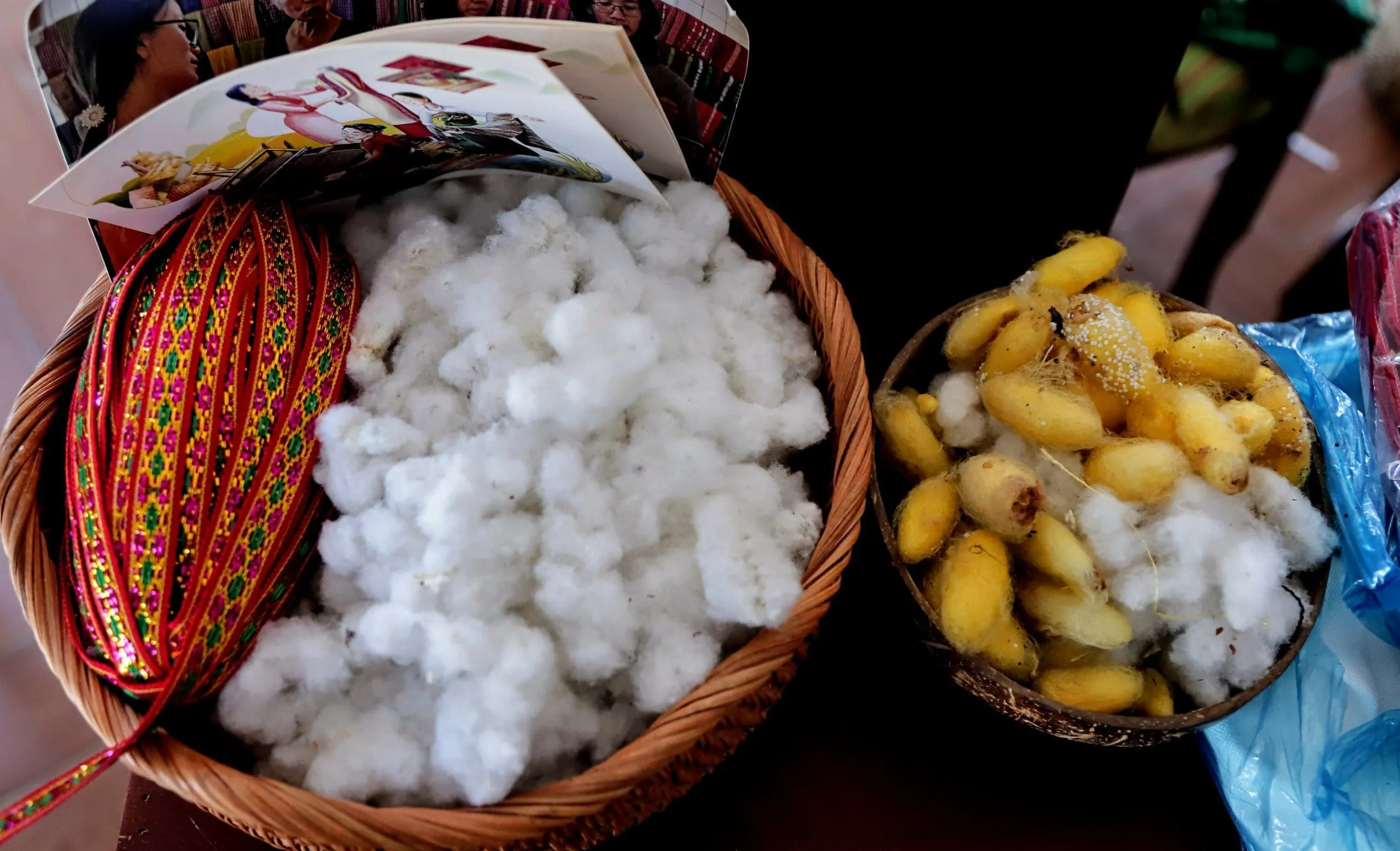
Traditional materials for weaving Cham My Nghiep brocade, mainly from cotton fiber and silk.
My Nghiep Brocade Patterns: A Unique Cultural Language
Patterns on My Nghiep Cham brocade are not just mere decorative motifs but also a unique cultural language, reflecting the values, concepts, and beliefs of the Cham people. Each pattern, each color carries its own symbolic meaning, expressing the cultural, social, religious, and belief identity of the user.
My Nghiep Cham brocade patterns are often decorated symmetrically, reflecting the concept of harmony and balance in the universe and life. The motifs are diverse and rich, divided into many groups such as plant patterns (lozenges, vines, hyacinth beans, puffed rice grains…), animal patterns (human figures, pigeons, turtles, lizards…), object patterns (towers, box lids, serrated edges, anchors…) and abstract geometric patterns.
Colors in My Nghiep Cham brocade often use primary, bright, and impressive colors such as red, white, yellow, green, alongside neutral colors such as black, brown, indigo, and dark blue. In the past, dyes were extracted entirely from natural plants, creating uniqueness and environmental friendliness. Elderly artisans in the village still preserve traditional dyeing secrets, using plants such as “phun pan” (red), “kalih likun” (red-brown), turmeric (yellow), “phun jieng” (brown), indigo plant (indigo blue)…
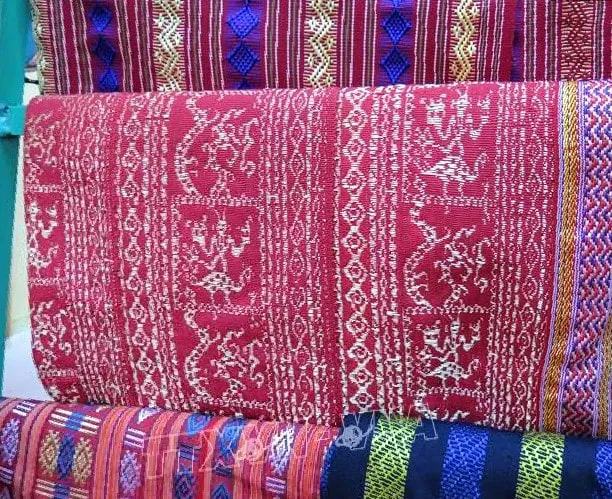
Intricate My Nghiep Cham brocade patterns, imbued with cultural values and humanistic philosophy.
Cultural Experiences at My Nghiep Weaving Village
Visiting My Nghiep village, tourists will experience a vibrant and authentic Cham Pa cultural space. Right on the main roads into the village, tourists can easily encounter family-run brocade weaving establishments, which serve as both homes, workshops, and product showrooms.
Strolling through the small alleys of the village, tourists will feel the peaceful atmosphere, immersing themselves in the daily life of local people. The clatter of looms, the lively conversations, the sounds of children playing… create a characteristic soundscape of a traditional craft village.
Tourists can visit weaving workshops, witness firsthand the elaborate fabric weaving process, and chat with artisans to learn about the history, culture, and techniques of brocade weaving. Tourists can even try their hand at weaving fabric on a loom, creating their own unique brocade products.
In addition, My Nghiep also has shops selling a variety of brocade products, from traditional costumes, scarves, bags, wallets, backpacks, to decorative items and souvenirs. Tourists can choose meaningful gifts, imbued with Cham Pa cultural imprints, to give to relatives, friends, or as mementos of their trip.
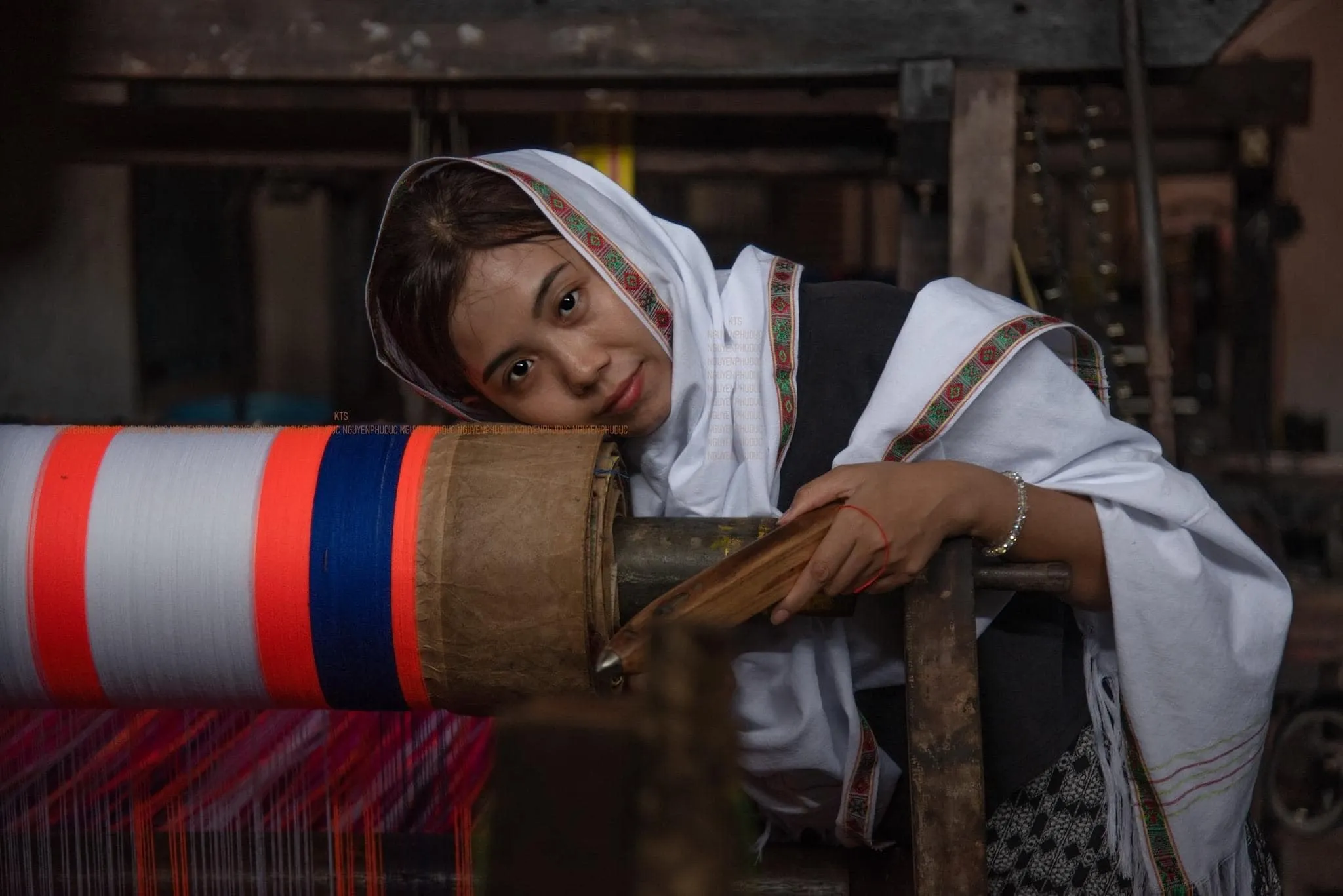
Experiencing brocade weaving at My Nghiep village, an interesting cultural tourism activity.
My Nghiep Brocade in Modern Life: Preservation and Development
In recent years, My Nghiep brocade has not only been used to make traditional costumes but has also been widely applied in modern life. Fashion designers have found endless inspiration from the unique beauty of Cham brocade, creating impressive collections that harmoniously combine traditional and modern styles.
My Nghiep brocade is used to make dresses, shirts, pants, scarves, bags, backpacks, pencil cases, wallets… bringing a personal, prominent, and attractive style to the wearer. The diversity in designs, styles, and colors has helped My Nghiep brocade reach many different customer segments, from dynamic young people to those who love traditional beauty.
It is encouraging that in My Nghiep, more and more young people after graduating from universities and colleges have returned to the village to continue their family’s traditional craft. They not only inherit traditional weaving techniques but are also dynamic and creative in designing patterns, finding markets, and applying information technology to business. The combination of traditional experience and modern thinking has created a new vitality for My Nghiep brocade craft village, helping weaving not only be preserved but also develop sustainably in the modern era.
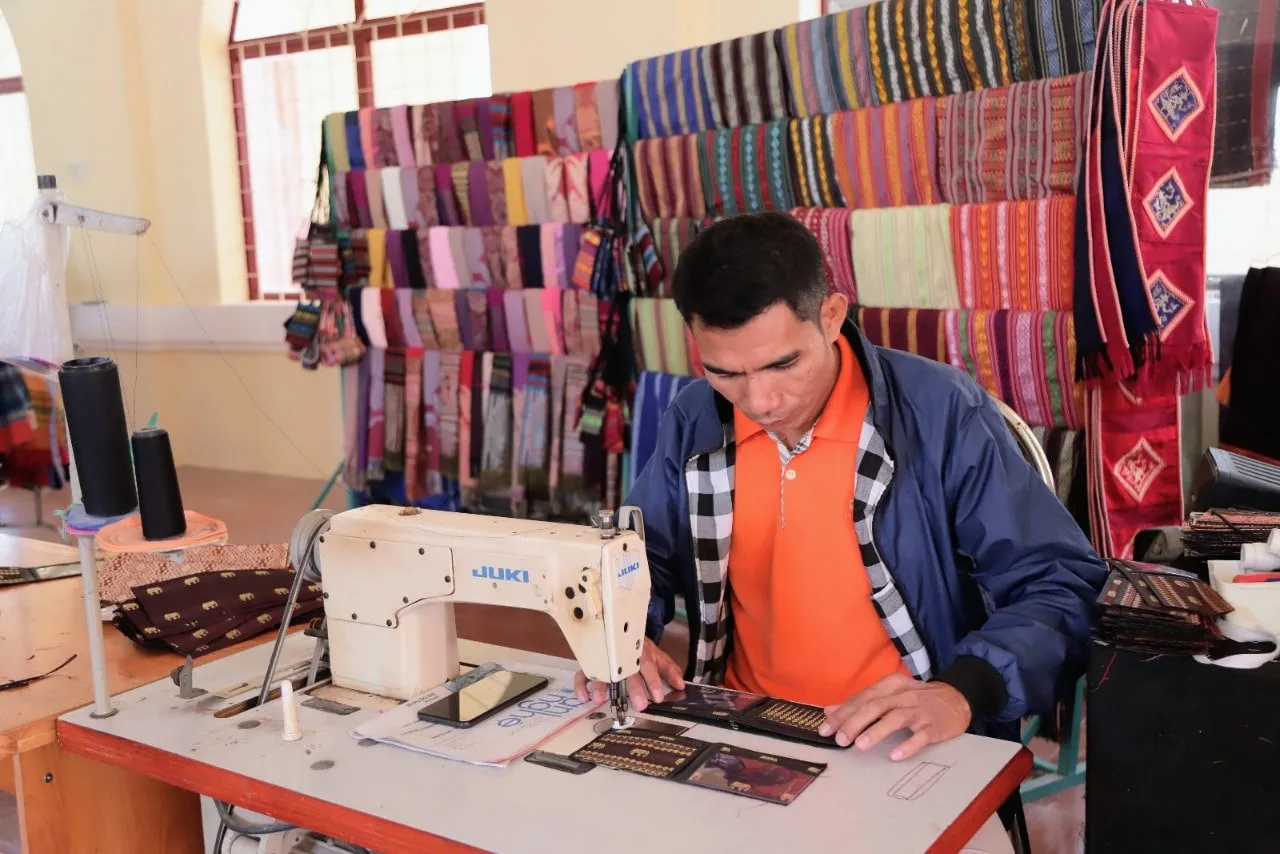
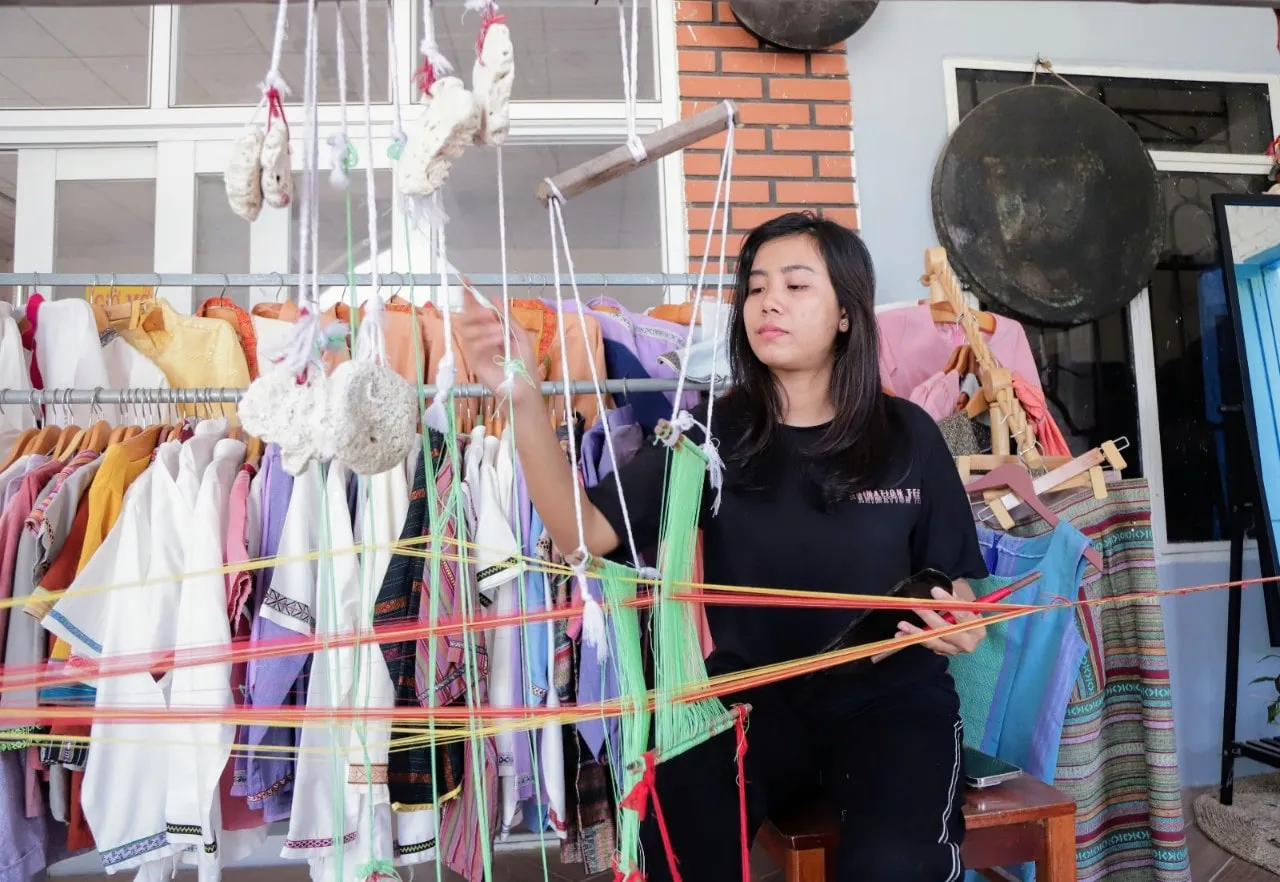
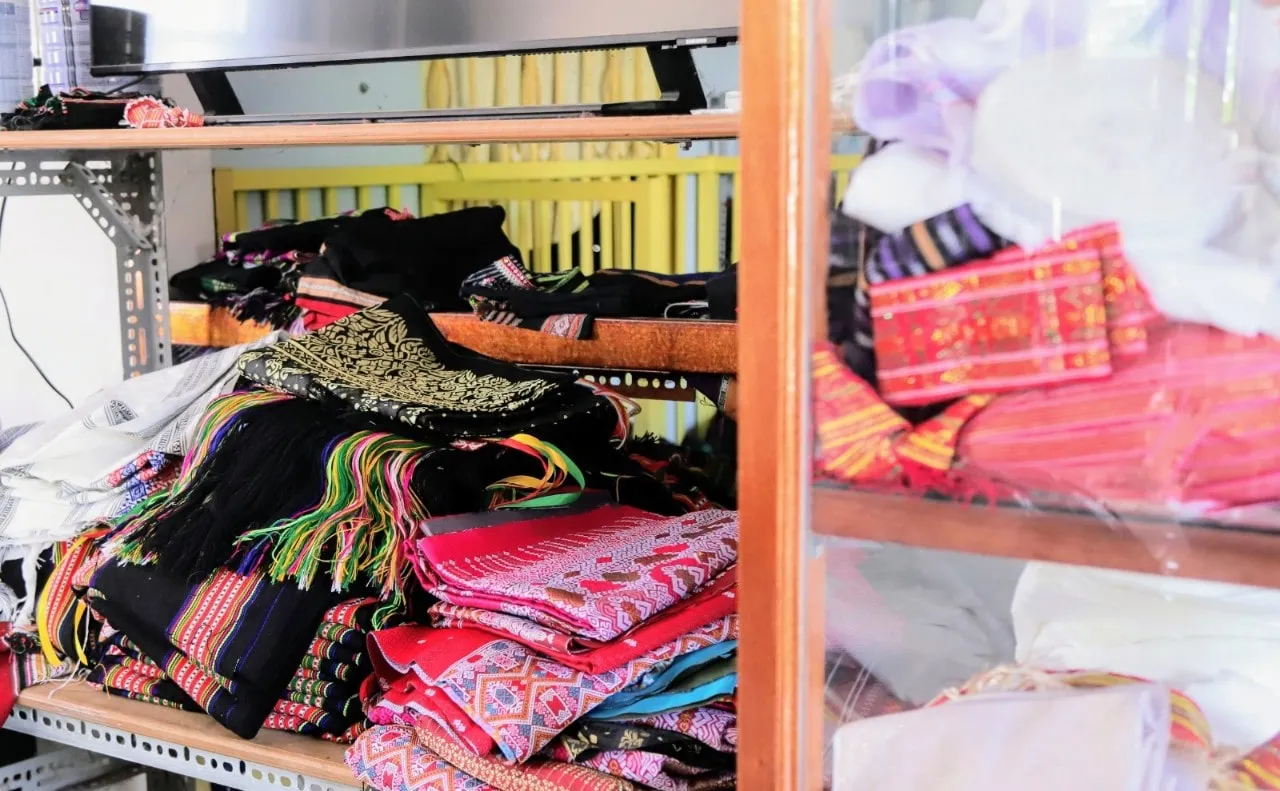
My Nghiep: Not Just a Craft Village, But Also a Land of Learning
Visiting My Nghiep today, tourists are not only surprised by the prosperity of a traditional craft village but also impressed by the studious spirit of the people here. New spacious houses and modern cars are no longer rare in My Nghiep, evidence of the changes and development of the village.
My Nghiep is not only famous for brocade weaving but is also known as a land of learning, where hundreds of outstanding children have passed exams and become engineers, doctors, teachers… Many families in the village have risen out of poverty thanks to weaving, having the conditions for their children to become educated and successful. The story of hardworking Cham mothers diligently weaving fabric to raise their children to study has become a source of pride and motivation for later generations to follow.
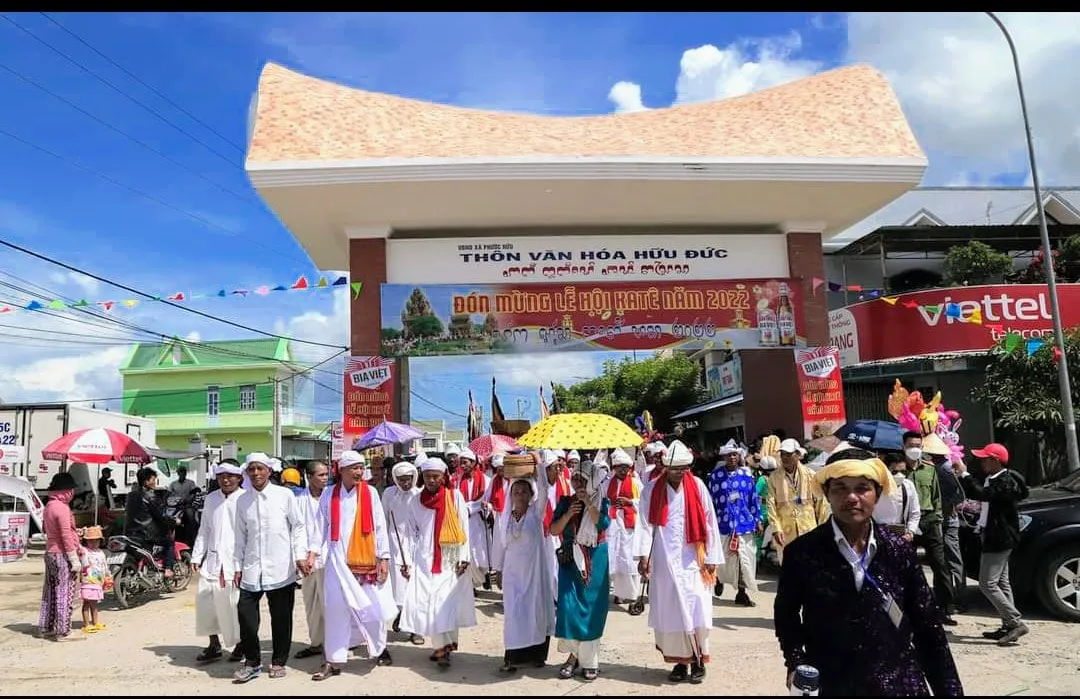

Cham My Nghiep brocade present in the cultural, religious, and daily life of the people.
Conclusion
My Nghiep Cham weaving village is not only an attractive tourist destination but also a place preserving precious traditional cultural values of the Cham people. Visiting My Nghiep, tourists will discover the beauty of brocade weaving, learn about the history, culture, and people of Cham Pa, and feel the intersection of tradition and modernity in contemporary life. Come and experience, to love and cherish Vietnamese cultural values even more!